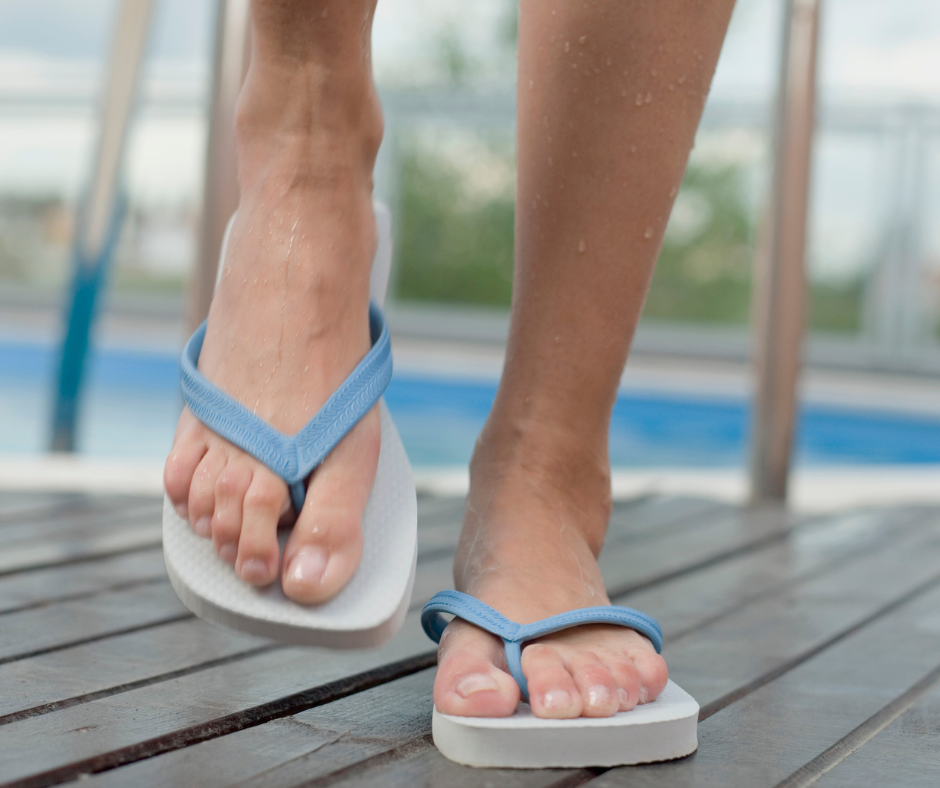
Summer is officially here, so we’re breaking out the flip-flops and sandals. But are flip-flops good for your feet? In today’s post, Dr. Eric Ricefield, Dr. Mark Yagodich, Dr. Aliza V. Eisen, and Cassandra Stache, DPM of greater Philadelphia’s Your Next Step Foot and Ankle Care Center share the pros and cons of this popular summer footwear.
Despite their simple design and variety of colors, some research indicates that flip-flops may not be a good choice for everyday wear due to the lack of support in the arch and heel areas. Also, toes can cramp as they attempt to keep them on the foot with each step.
Flip-Flops and Your Feet
Flip-flops have become a summer essential for many individuals. While they may be stylish and easy to slip on and off, they can be dangerous if worn too often. While they might protect wearers from fungal infections, they can also cause sprained ankles and foot pain if you trip while wearing them.
When is it okay to wear flip-flops?
People who enjoy wearing flip-flops should limit the type of environments in which they’re wearing them. Good places to wear them include swimming pools, public showers, and the beach because they prevent conditions such as athlete’s foot from developing. However, they should not be worn while participating in sporting events, walking long distances, or driving.
Flip-flops should only be worn for short periods. They can protect your feet in areas that likely have fungi, like gym locker rooms and public pool decks. Plantar warts and athlete’s feet are two common fungi that flip-flops can protect your feet from.
Why are flip-flops bad for your feet?
Not only do they offer no support, but they also don’t provide heel cushioning or shock absorption, which can create problems for your feet. Because they offer little protection, you may suffer from puncture wounds, stubbed toes, and cuts on your feet. Flip-flops also can cause blisters and calluses and slow you down when walking.
Flip-flops can create numerous problems for your feet. If you want more information about the pros and cons of wearing them, contact Greater Philadelphia’s Your Next Step Foot and Ankle Care Center. You can click here to locate contact information for the nearest office to book your appointment.
